N.J. court finds Oyster Creek spent fuel casks are “permanent”

The Tax Court of New Jersey has ruled that Oyster Creek’s spent nuclear fuel storage casks are subject to taxation as real property.
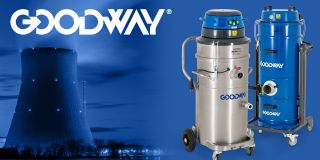
A message from Goodway Technologies
Ensuring Safety and Cleanliness: The Crucial Role of Industrial Vacuums in Nuclear Power Facilities

The Tax Court of New Jersey has ruled that Oyster Creek’s spent nuclear fuel storage casks are subject to taxation as real property.
Following the release of a new report from the National Academies of Sciences, Engineering, and Medicine on the future of advanced nuclear reactors in the United States, experts in policymaking, finance, regulation, community engagement, and energy technologies convened a workshop recently on how a safe and secure foundation for the nuclear industry going forward can be laid.
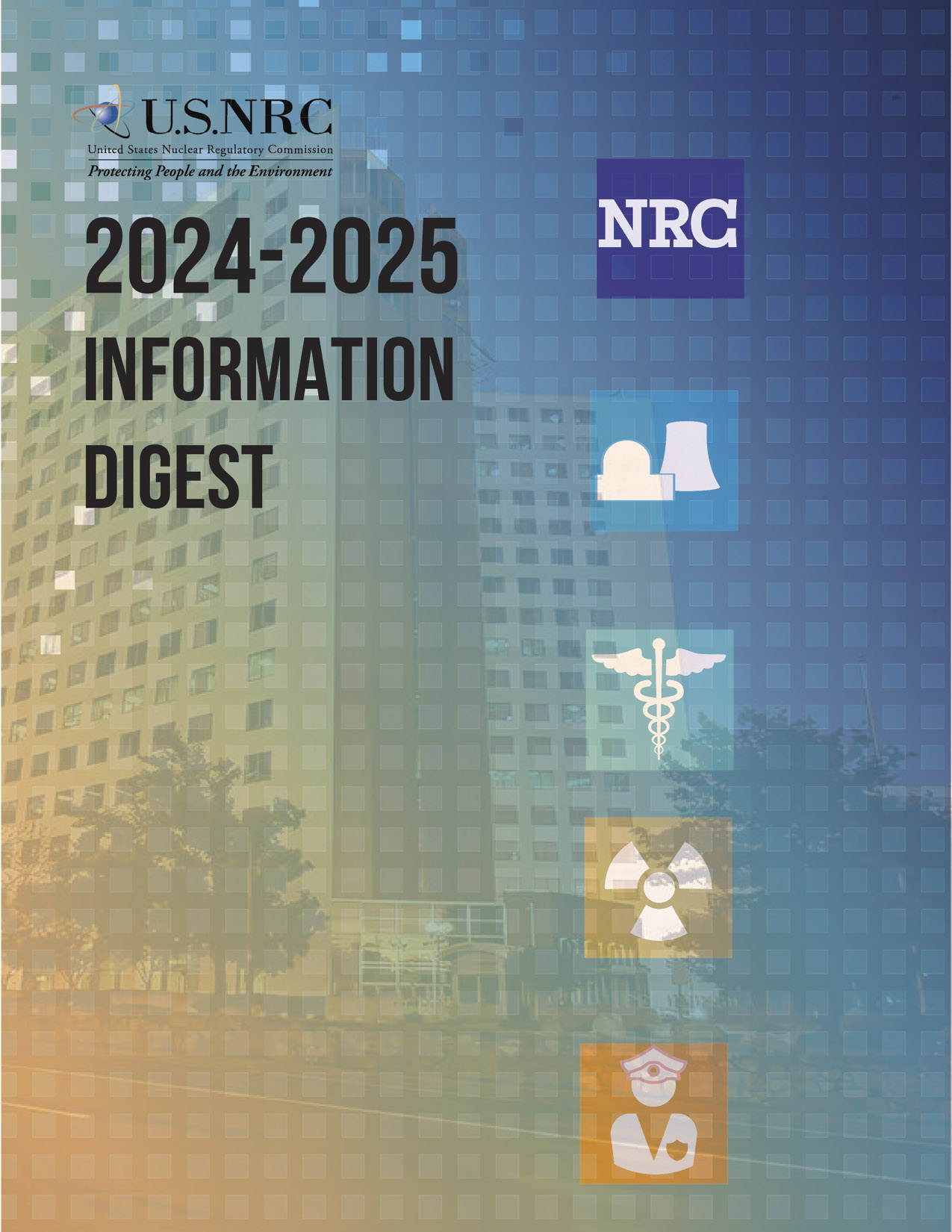 The Nuclear Regulatory Commission has published its 2024–2025 Information Digest, NUREG-1350, Vol. 35, which describes the agency’s responsibilities and activities and provides general information regarding nuclear-related topics.
The Nuclear Regulatory Commission has published its 2024–2025 Information Digest, NUREG-1350, Vol. 35, which describes the agency’s responsibilities and activities and provides general information regarding nuclear-related topics.
According to the NRC, the digest is intended to be a quick reference with important facts about the NRC and the industry it regulates presented publicly in an “easy-to-understand format” with visual aids.
The NRC published the digest annually from 1989 until 2023, when the agency switched to a two-year publication cycle. The next digest containing updated data will be published in February 2027.

We welcome ANS members with long careers in the community to submit their own stories so that the personal history of nuclear power can be capured. For information on submitting your stories, contact nucnews@ans.org.
When I graduated from Scranton University in 1956 with a B.S. in physics, I was in awe of the nuclear era and determined to be part of a nuclear future. Fortunately, I landed a position with Pratt & Whitney Aircraft as part of the Aircraft Nuclear Propulsion program. The position included a one-year assignment as a visiting staff member at Oak Ridge National Laboratory.
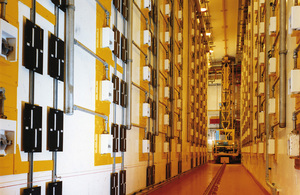
The United Kingdom’s Nuclear Decommissioning Authority has announced that it will establish a Plutonium Ceramics Academic Hub with the Universities of Manchester and Sheffield. The announcement follows a decision by the U.K. government in January to immobilize the country’s inventory of civil separated plutonium at the Sellafield nuclear site, mitigating the material’s long-term safety and security risks.

Leaders from Holtec International and Hyundai Engineering & Construction gathered at the Palisades site in western Michigan today to announce an “expanded cooperation agreement” to build a 10-GW fleet of Holtec-designed SMR-300s in North America. That fleet’s first builds would be at Palisades, where Holtec is now focused on restarting the site’s shuttered 777-MWe pressurized water reactor by the end of this year. Under the “Mission 2030” plan launched today, Holtec would then build a pair of SMR-300 PWRs at the Palisades site—targeting operation in 2030.
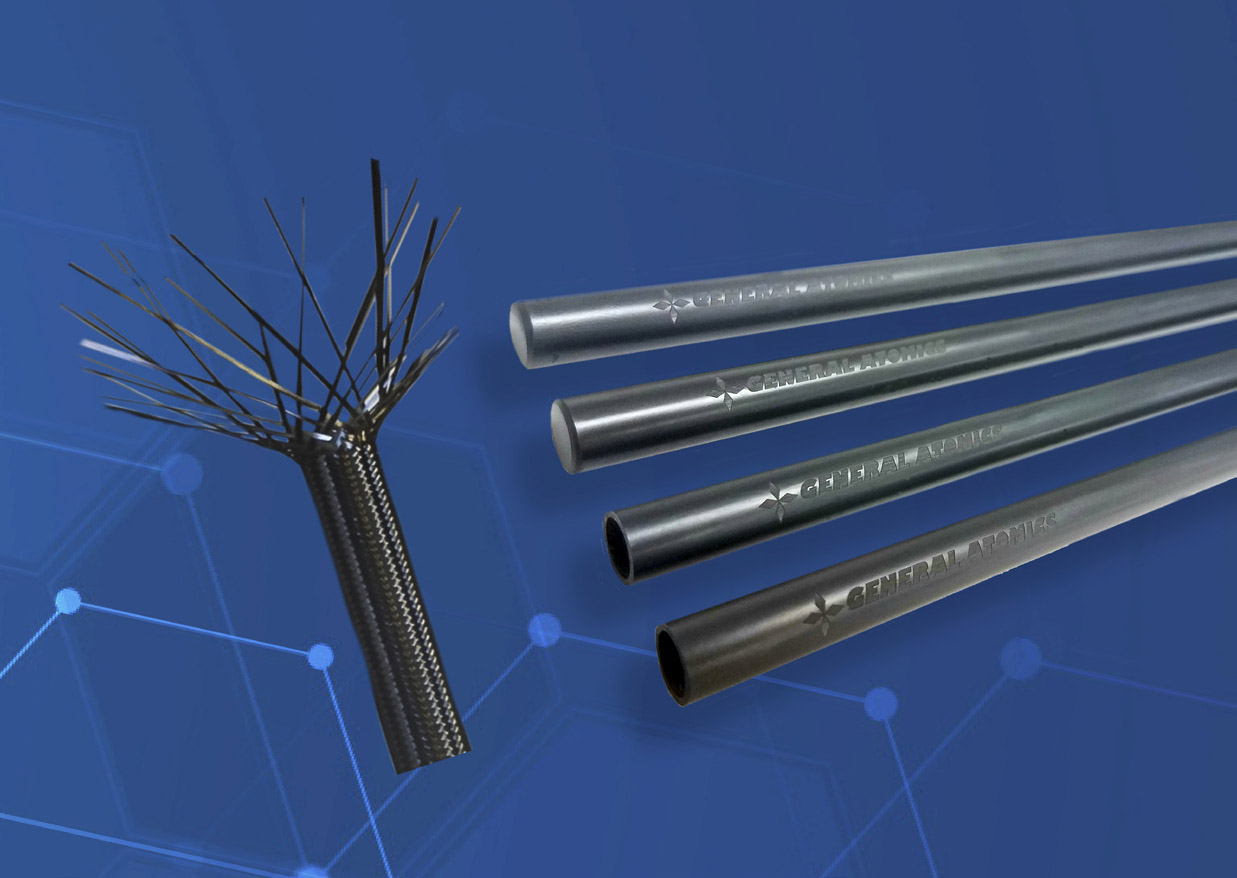
General Atomics Electromagnetic Systems (GA-EMS) is charting a path to advance SiGA® silicon carbide (SiC) ceramic matrix composite cladding for nuclear fuel rods to provide enhanced safety, improved operational performance, and economics benefits for the existing Light Water Reactor (LWR) fleet as well as future advanced reactor systems.

Merz
The conservative Christian Democratic Union came out on top in Germany’s February 23 election. CDU leader Friedrich Merz achieved a “lackluster win,” as the Associated Press termed it, but his party’s political agenda could mean a revival for nuclear energy in Germany.
The country shut down its final nuclear reactor in 2023, in large part as a reaction to the 2011 accident at Japan’s Fukushima Daiichi nuclear plant. Now many Germans are taking a renewed interest in clean, reliable nuclear power.
First, Merz and the CDU need to form a coalition to secure at least 316 votes in Parliament before he can be formally elected chancellor of Germany, the AP reports. Provisional results shared by Politico show that the CDU carried 28.5 percent of Sunday’s vote, trailed by the Alternative for Germany Party with 20.8 percent, the Social Democratic Party with 16.4 percent, and Alliance 90/the Greens with 11.6 percent.
With the annual ANS election right around the corner, American Nuclear Society members will be going to the polls to vote for a vice president/president-elect, treasurer, and members-at-large for the Board of Directors. In January, Nuclear News published statements from candidates for vice president/president-elect and treasurer. This month, we are featuring statements from each nominee for the Board of Directors.

Coons

Moran
The bipartisan Financing Our Futures Act, which expands certain financing tools to all types of energy resources and infrastructure projects, was reintroduced to the U.S. Senate on February 20 by Sens. Jerry Moran (R., Kan.) and Chris Coons (D., Del.).
Via amendment to the Internal Revenue Code, the legislation would allow advanced nuclear energy projects to form as master limited partnerships (MLPs), a tax structure currently available only to traditional energy projects.
An MLP is a business structure that is taxed as a partnership but the ownership interests of which are traded like corporate stock on a market. Until the Internal Revenue Code is amended, MLPs will continue to be available only to investors in energy portfolios for oil, natural gas, coal extraction, and pipeline projects that derive at least 90 percent of their income from these sources. This change would take effect on January 1, 2026.
In February, the Community of Practice (CoP) webinar series, hosted by the American Nuclear Society Standards Board’s Risk-informed, Performance-based Principles and Policies Committee (RP3C), celebrated its fifth anniversary. Like so many online events, these CoPs brought people together at a time when interacting with others became challenging in early 2020. Since the kickoff CoP, which highlighted the impact that systems engineering has on the design of NuScale’s small modular reactor, the last Friday of most months has featured a new speaker leading a discussion on the use of risk-informed, performance-based (RIPB) thinking in the nuclear industry. Providing a venue to convene for people within ANS and those who found their way online by another route, CoPs are an opportunity for the community to receive answers to their burning questions about the subject at hand. With 50–100 active online participants most months, the conversation is always lively, and knowledge flows freely.
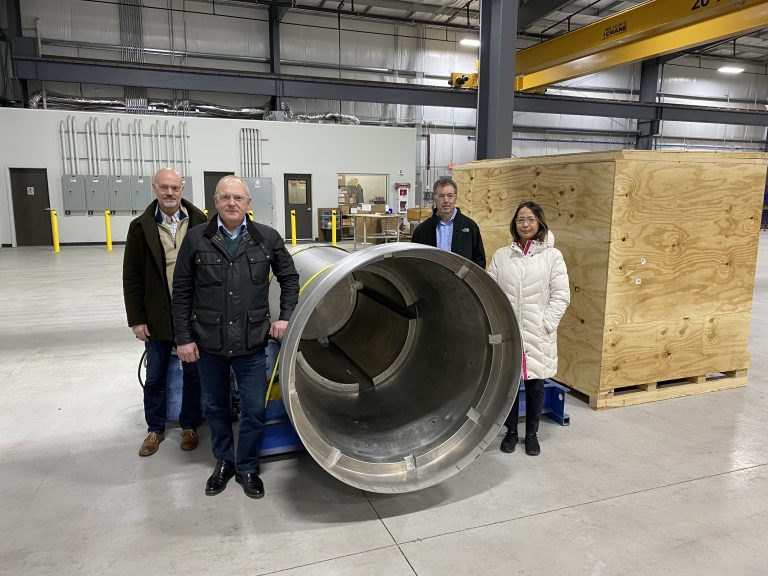
A team from Idaho National Laboratory and the Department of Energy’s Office of Nuclear Energy recently visited Carolina Fabricators Inc. (CFI) in West Columbia, S.C., to launch the fabrication process for the primary coolant system of the MARVEL microreactor. Battelle Energy Alliance, which manages INL, awarded the CFI contract in January.
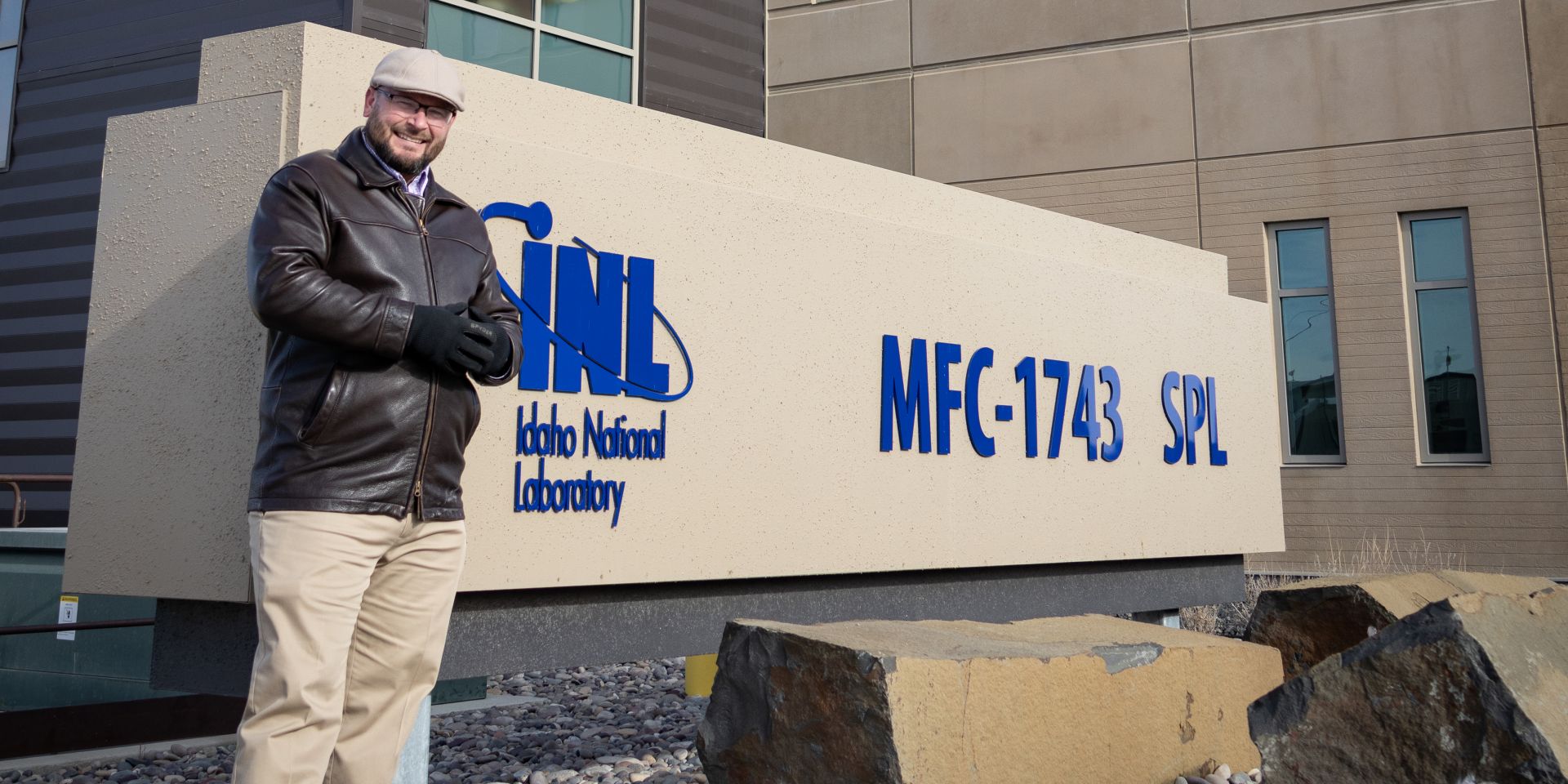
Idaho National Laboratory’s newest facility—the Sample Preparation Laboratory (SPL)—sits across the road from the Hot Fuel Examination Facility (HFEF), which started operating in 1975. SPL will host the first new hot cells at INL’s Materials and Fuels Complex (MFC) in 50 years, giving INL researchers and partners new flexibility to test the structural properties of irradiated materials fresh from the Advanced Test Reactor (ATR) or from a partner’s facility.
Materials meant to withstand extreme conditions in fission or fusion power plants must be tested under similar conditions and pushed past their breaking points so performance and limitations can be understood and improved. Once irradiated, materials samples can be cut down to size in SPL and packaged for testing in other facilities at INL or other national laboratories, commercial labs, or universities. But they can also be subjected to extreme thermal or corrosive conditions and mechanical testing right in SPL, explains Colin Judge, who, as INL’s division director for nuclear materials performance, oversees SPL and other facilities at the MFC.
SPL won’t go “hot” until January 2026, but Judge spoke with NN staff writer Susan Gallier about its capabilities as his team was moving instruments into the new facility.
A new council within the president’s executive circle aims to advise Trump on strategies to “achieve energy dominance,” ultimately by boosting domestic energy production.
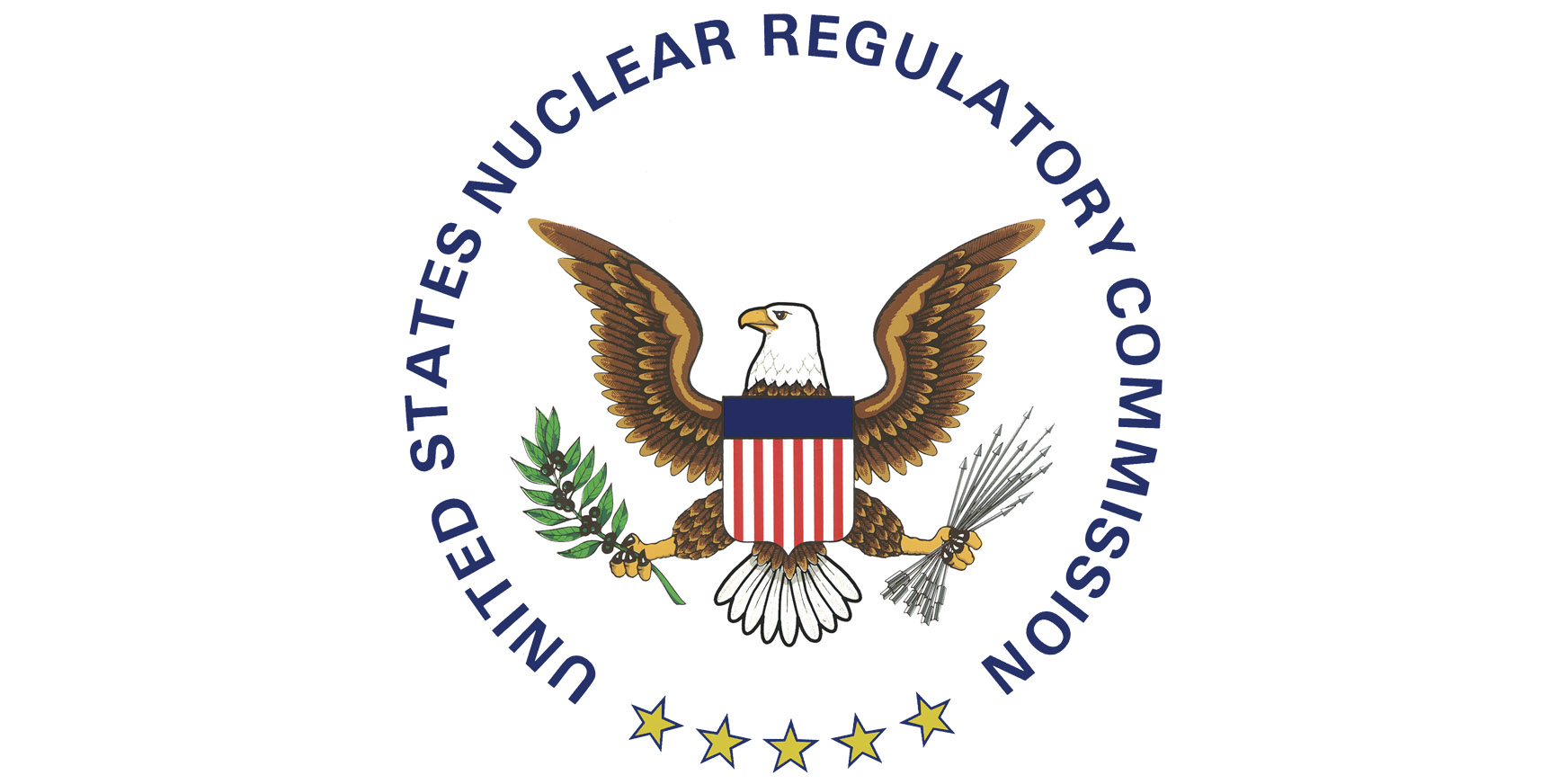
The Nuclear Regulatory Commission is looking for feedback on its proposed rule for fees for fiscal year 2025. The proposal was published in the February 19 Federal Register. The federal government's fiscal year is the 12-month period from October 1 to September 30.
The proposed rule includes instructions on how to submit written comments to the NRC. Comments will be accepted through March 21, 2025.
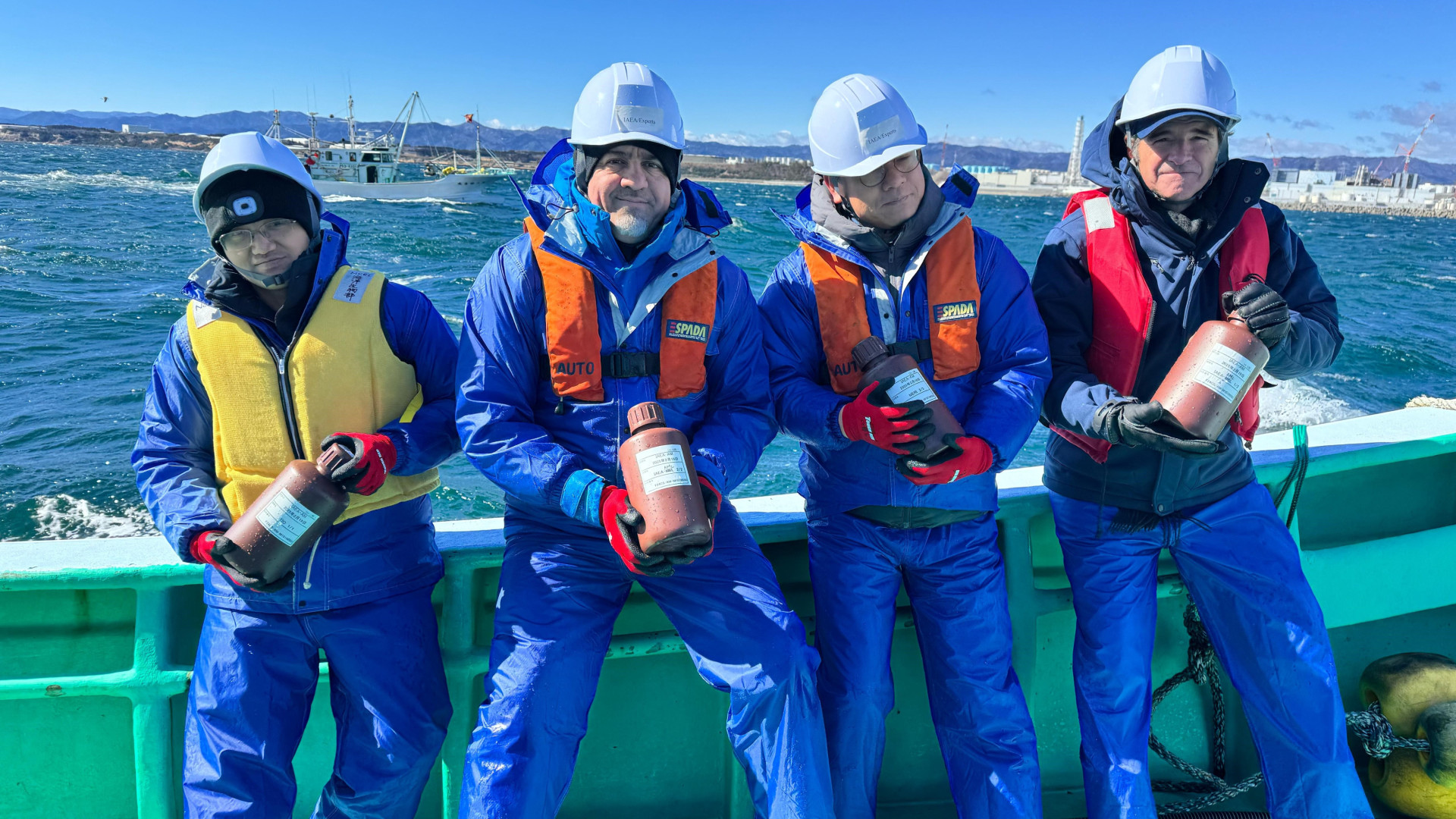
International Atomic Energy Agency director general Rafael Mariano Grossi visited Japan’s Fukushima Daiichi site on February 19, where he joined scientists from the Third Institute of Oceanography in China, the Korean Institute for Nuclear Safety in South Korea, and the Spiez Laboratory in Switzerland in collecting seawater samples from a boat near the damaged nuclear power plant.
The American Nuclear Society has opened applications for the Glenn T. Seaborg Congressional Science and Engineering Fellowship. Congressional Fellows can directly contribute to the federal policymaking process, working in either a U.S. senator’s or representative’s personal office or with a congressional committee. They will be responsible for supplying Congress with their expertise in nuclear science and technology, having a hand in the creation of new laws while gaining a deeper understanding of the legislative process.
ANS strongly encourages interested members to apply. Application instructions can be found here.
After 50 years of operation, Unit 1 at Belgium’s Doel nuclear power plant has been permanently shut down.
Just weeks ago, Belgian Prime Minister Bart de Wever talked about trying to keep Doel-1, which was retired on February 14, in operation. He faced an uphill battle, however, given the decades the nation has spent arguing about nuclear energy. In 2003, Belgium enacted a law banning construction of new nuclear reactors and calling for eventual decommissioning of existing reactors, Belga News Agency reported.

A team with the Department of Energy’s Idaho Cleanup Project successfully tested robotic equipment being developed to retrieve radioactive calcine, a granular solid waste, at the Idaho National Laboratory Site, the DOE’s Office of Environmental Management has announced.

U.K.-based Core Power has announced that it intends to develop a maritime civil nuclear program anchored in the United States with the goal of bringing floating nuclear power to market by the mid-2030s. The program, called Liberty, is to encompass the modular construction of advanced reactor technology and create the regulatory and supply chain frameworks needed to begin the mass production of floating nuclear power plants (FNPPs) on a global scale.